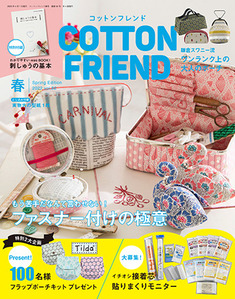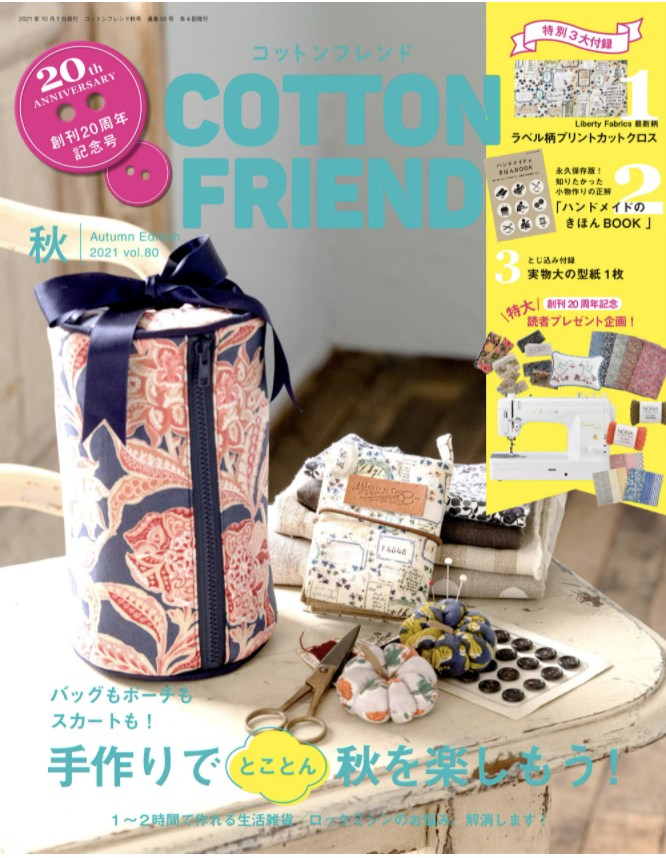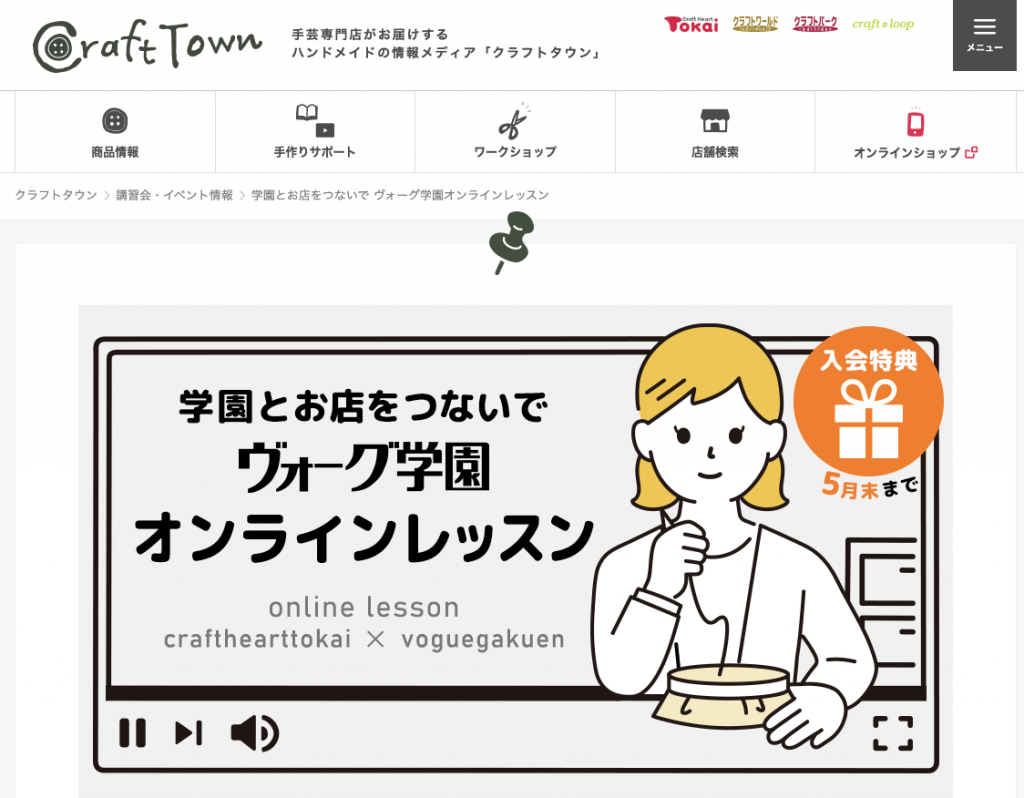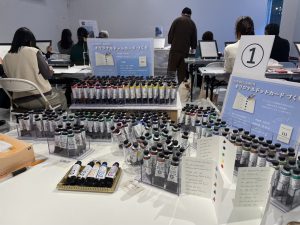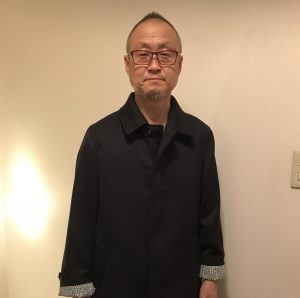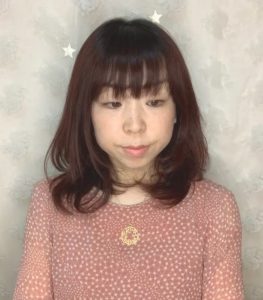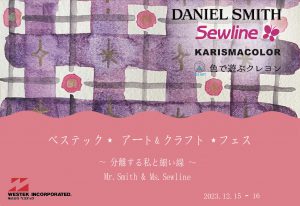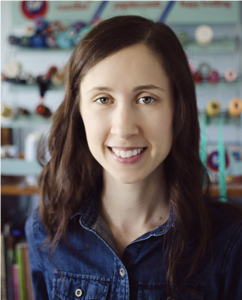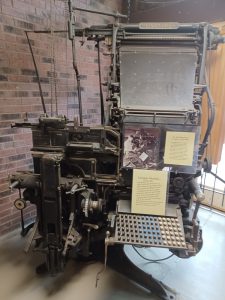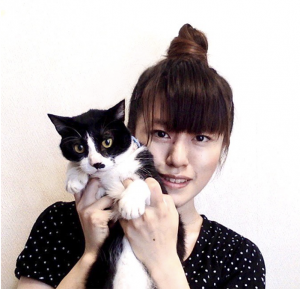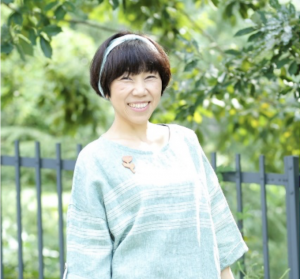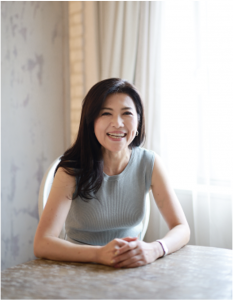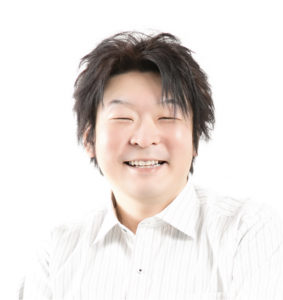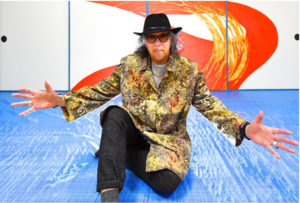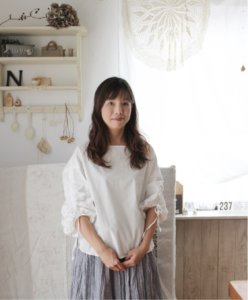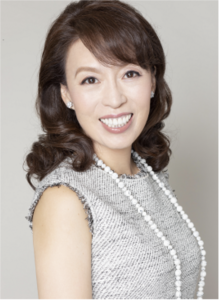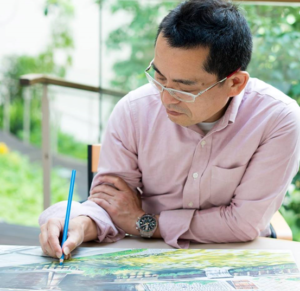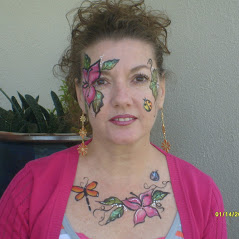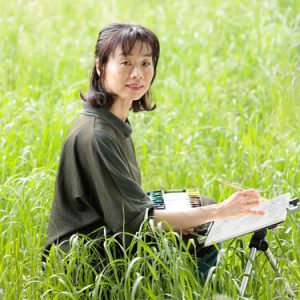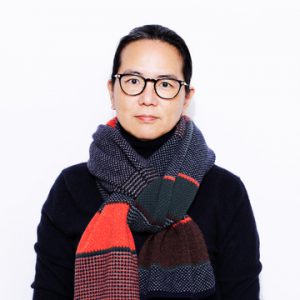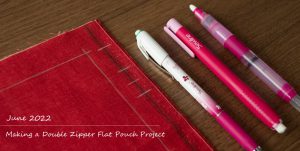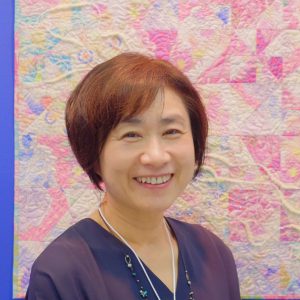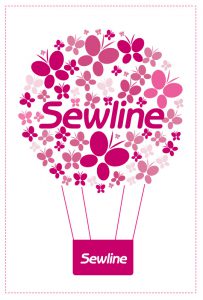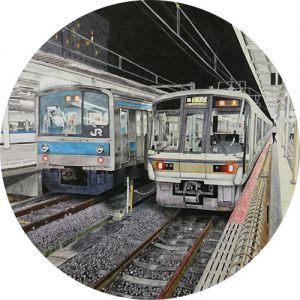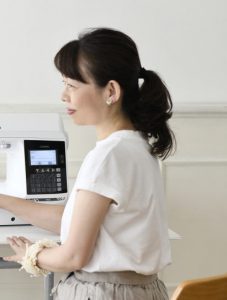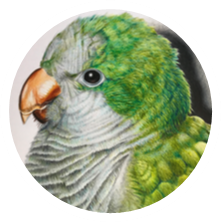#16 ゲスト:くぼでら ようこ
The Guest of Sept. 2021: Ms. YOKO KUBODERA
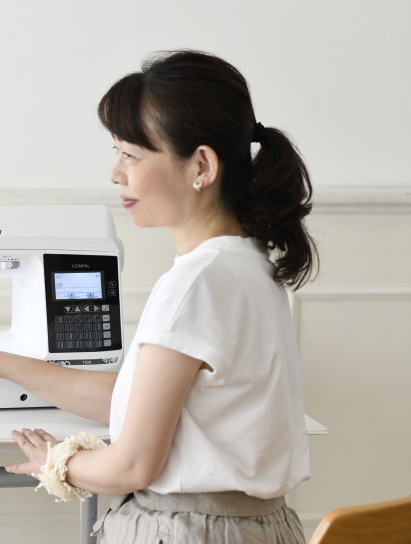
今月のゲスト:くぼでらようこ
ジャンル:布もの作家 (Designer of Fabric items)
プロフィール: 神奈川県生まれ。dekobo工房主宰。短期大学と専門学校の服飾デザイン科で学ぶ。日本洋裁技術検定上級取得。2004年より、布もの作家として活動。ワークショップやイベントに多数参加。
Guest of Sept. 2021: Ms. YOKO KUBODERA
Genre: Fabric, Accessory Writer, Designer of Fabric Items.
Profile: Born in Kanagawa, Japan Chairperson of Atelier Dekobo Workshop.
Studied and graduated in the Fashion Design Department of Junior College and Vocational School. Obtained advanced Japanese dressmaking technique certification. Since 2004, Yoko Kubodera has been very active as a Designer of Fabric Items, a Fabric Accessory Writer and has participated in many workshops and events!
Note: Mode (Describing Fashion Company or Fashion Concept – derived from French Mode – or simply Fashion Design and Fashion
作品
著書本
マガジン
お知らせ
ヴォーグ学園オンラインレッスン
2022年4月からヴォーグ学園+手芸店トーカイをつなぐオンラインレッスンがはじまります。
ヴォーグ学園のスタジオからオンタイムで発信!
ライブ中継のように手芸店トーカイの店舗内でレッスンが受けられるというオンラインレッスンになります。
インタビュー音声
Q.くぼでら先生はどのようなことがきっかけでこの道に進まれるようになったのでしょうか。センスの良さから、何かモード関係のお仕事に関わっていたのではないかと推察できるのですが、その辺りもお聞かせください。
きっかけは…、よく聞かれるんですが、自分の中で「何かあったかな?」って思い出さないとわからないくらいなんです、ただ高校卒業後に服飾の短期大学に進んだんですね。そこで学んでいるときに、その短期大学ではサッと学ぶのではなくて、割と専門的なことも学べる学校だったんです。そのまま短期大学2年で卒業すると洋服の会社に入社できたとしても企画室に入れないんですね。3年間以上修得しないと、希望の企画室に入れないので…。
―そうなんですか!そういう決まりがあるんですね。
あっ、「あの時代は」なんです(笑)今はちょっとわからないんですけど…。
ならばもう少し深く、そして生地の柄などをデザインするテキスタイルデザインとかにも興味があったので…。服をデザインすることももう少し深く学びたいなっていうのもあったので、短大を卒業した後に専門学校に行ったんです。専門学校はその卒業した学校の系列の専門学校があったので、短大を卒業していれば1年間で良かったんです。だけど、専門学校では本来3年間かけて学ぶようなことを丸々1年でぎゅっと学ばなくちゃいけない。だからものすっごいハードだったんです!課題は本当にてんこ盛りで。もう全然寝てないよねっていう思い出しかないくらい(笑) モード関係のお仕事などはしてないんですけど、そのまんま学校の方からお誘いを受けて、教員になったんですよ。短大卒業して1年間学んだくらいの人を教職に推薦してくれるなんて…って思ったんですけど(笑)
―それだけ際立っていたんでしょうね。
いやぁどうなんですかね…。もう少し鍛えないとダメだと思われたのか(笑) でも私は企業に入りたくて専門学校へ進み学んでいたので、すごく悩んで…企業も受けていたんですけど、学校側の方も強く推してくださったので…。もうあの時の気持ちももう忘れてきちゃったんですけど、最後に教職の方に就いたんです。
―高校を卒業して、服飾関係の学校に入ろうと思ったのは、元々そういうお洋服などを作るのが好きだったからなんでしょうか?
薄ら覚えなんですけど、確か高校時代に手作りのものを作るのが流行ってたんですよ。当時テニス部だったので、テニスラケットのカバーを作ったり、ウェアーを入れる袋とかを作っていた記憶があって、だから嫌いではなかったんだと思うんです。
―その当時から身近な小物とかを作られていたんですね。
そうですね。
Q.くぼでら先生の作品のデザインもそうなんですが、完成品にした時の布と布のコンビネーションがとても素敵だなと思ったんですが、色づかいや柄合わせなどはどのように決めていらっしゃるのでしょうか。
これもね、「ずばりこうなんです!」っていうのがなくて…。割と感覚で。 布と布を並べてみて、コレとコレとコレが合うよね~っていう感覚で決めちゃうことが多くて…、なので全然計算とかはしていないです(笑)
―そうなんですね。柄物だったり色とかもトーンが違ったりすると、ちょっとちぐはぐになったりすることもあると思うんですが、先生の作品は全部可愛くて…色んな色を使っているのに1つのまとまった作品にちゃんとなっているので、どうしたらこんな風に合わせられるのかなって思っていたんですけど…。
ありがとうございます、すごい嬉しいです!でもやっぱり失敗もありますよ。「あ~!これじゃなかったね」っという失敗もありますけど、でもその失敗もやっぱり感覚で合わせてしまっているからなんでしょうね。
―ということは、柄とか色とかを合わせるためのお勉強の下地があるとかっていうそういうわけではなくて…?
あっ、それはないですね。
―じゃあ先生の元々生まれ持ったセンスというか。じゃあ中々真似できないですね(笑)
うーん(笑)色彩を学んだっていう記憶はないですね。 柄と柄を合わせるって難しいじゃないですか。だから最初は、色のトーンが合うもの同士で合わせていったんだと思う。そこに無地を少しでも入れると全体的な感じが締まるとか、そういう感覚で決めていってたんだと思うんです。それを繰り返している内に何となく感覚が養われていったのか…。それともそれがたまたま可愛くなったのか、ちょっとわからないんですけど(笑)
でも今回の作品集で使った生地が、フレンチジェネラルっていう生地なんですけど。このデザイナーさんが、ヨーロッパのアンティークの生地を土台にして、テキスタイルをデザインされている方なんですね。なので色のトーンが合っているので、合わせやすいんじゃないかなっていうのもあります。
Q.アンティークの生地にとても興味がおありということですが、アンティーク生地の魅力や他の生地との違いなどを教えていただければと思います。
アンティークの生地との出会いは、手作りが流行りだしたのがもう15年くらい前だと思うんですけどもう少し前かな、その時に友人がたまたまヨーロッパの方に行って、グレインサックっていう多分穀物とかを入れていた袋だと思うんですが、それを仕入れたりしている友人からの依頼で、バッグとかを作ったんですね。そのグレインサックってアンティークなので、薄汚れていたりかすれていたりするんですよ。これでバッグとかを作って素敵になるものか不安だったんですけど…、作ってみるとすっごい素敵になったんです。
それで、グレインサックっていうのは穀物を入れるものなので、そのお家お家で織られるらしいんですね。100年くらい前のものって聞いたんですが。で、ラインとかが入ってるんですが、そのラインの色も違うし、本数も太さも違うし、ステンシルのようなマークがついていたりだとか、そういうのもお家によって違ったりするっていうのがグレインサックっていう穀物入れになっていた物よっていうのを聞いて使ったのと、枕カバーとかリネンなのかな?ちょっとワンポイント刺繍とかがされていたりするんです。イニシャルが多くて。すごくそれが可愛くて、すごく丁寧に刺したものではなく、ざっくりとしてるんですけど、使いこなされた生地にピッタリな雰囲気で…。
―生活感とかも含めておしゃれな感じなんでしょうか。
そうなんですよね。それでまたシンプルなバッグでも…本当にマチもないし、普通の袋に長めの持ち手をつけただけなのに、すごくかわいいバッグができたりとかしたんです。
―すごいですね。その生地の魅力というか、汚れとか擦れとかっていうのを含めての生地が出来上がってるんですね。
その時に、何を作っても可愛いなっていうのが印象的で衝撃的だったんですよね。
―100年分の歴史と魅力があるんですもんね。そしたらやっぱりその世界観に惹かれてしまいますよね。
そうなんですよね~…。
今はアンティークのものを販売してくださる方もたくさんいらっしゃるじゃないですか。蚤の市などで何枚か買ったりもしていたんですけど、それが段々人気が出てきてしまって手に入りづらくなってきています。今はそれを仕入れたりするのも大変なのかな。こんな状況でもあるから、買い付けとかにも行けないんでしょうけど…。
アンティークの生地はその頃から好きでした。フレンチジェネラルの生地と出会ったときアンティークの生地の雰囲気があって…、色とかかすれている感じ?ただ残念なのが、ほとんどシーチングしかないんです。他にキャンバス地にしてみましたとかリネンにしてみましたとかね、そういうものではほとんど出てこなくて…。たぶんキルターの方向けに作られている生地なので、手縫いでも縫いやすいシーチングで作られてるんじゃないかなって思うんです。
Q.作品ひとつひとつに込められている意味があるかと思うのですが、一番特別な作品とメッセージなどがあれば教えてください。
ひとつひとつの作品に込められている意味…というのはあんまりないんですが、どれが一番好き?って聞かれたら、この本だと表紙になってるピンクッションですね。
自分の好きだったり可愛いなって思う生地って、どんなに小さくハギレが出ても捨てられないんですよね。でもそのハギレを取っておいても、溜まっていっちゃうんです…。フレンチジェネラルは特に小さなハギレも可愛くてピンクッションにしてみるとこれがなんとも可愛いなって思って、(出版社に)頼まれたわけでもないんですけどいっぱい作ってもいいですか?って伺ったら良いですよってお返事をいただけて、沢山作ったらやっぱり可愛いね!となって表紙にしてもらったんです(笑)。
あとは他のものでは…、新しい材料?特に口金系なんですけど、がま口の口金とかあるじゃないですか。どんどん新しいものが出てきたりするんですね。そういう新しいものって作り方がわからないじゃないですか。でも、使ってみたい!って思っちゃうんですね。それを試行錯誤して、どこから入れるの?入れたらどんな形になるの?から、スタートするとすごい大変なんですけど、その時にシーチングっていうのを使って試しに作ってみるんです。どうしてもお洋服上がりなので、シーチング生地を使うんですけど、新しい道具とかを使う時にちょっと大変さはありますね。
―でも、興味があればそこでチャレンジされる感じなんですね。わからなくても、とりあえず買ってみて、っていう…。
失敗も多いんですけど…(笑)
Q.作品を作る上で、一番苦労したことはなんですか。
どこか遊び心のある作品に仕上げたいんです。だけど凝りすぎて遊びすぎると…、思ってた形にならないジレンマがあったりするんですよねー…(笑)。 (作ったものを)使わないと、飾っておくだけになっちゃうので、「実用的に使えるように」が一番なんですけど、でもそこの中にも、えっココこんな風にしちゃうんだっていう遊び心のある作品に仕上げたいなあっていうのはいつも考えながら作ってます。お洋服を作っているときとか、学んでいた時もそうだったんですけど、誰も見ないよねっていうようなポケト、シームポケットっていう脇のポケット。あの脇のポケットの生地なんて中に入っちゃうから、誰も見えないじゃないですか。脱ぎ着するときにしか見えないような、そのポケットを柄にしちゃうとか!ボタンとかを付けたときも、ボタン付けの後ろ側にビーズ。ボタンを外すと裏にビーズがついている。でもそれも、ボタン閉めてると誰も見えないんですけど。 無駄なところなのかもしれないけど、なんだかちょっとそういうところで遊ぶのが好きですね。
Q.ご自分のワークの中で、大きな夢やこれから挑戦したいことはありますか。
特に大きな挑戦をしたいっていうことはないんですけど、作品や本を見ていただいて目に留めてくださった方や、作風を気に入ってくださってちょっと習ってみたいな~と習いに来てくださっている方たちと、(凝ったデザインのものは)大変な時もあるかもしれないんですけど、いつも笑って何か作れたらいいなあっていうのは常に思っていて…。完成したものを見て、嬉しい!とか楽しい!とかって思ってくださるのを見てると、私も嬉しいんです。
ちょっと今挑戦してるのが、手作りってどっちかっていうとアナログなものじゃないですか。去年くらいからこういうご時世になってしまって、やはり動画レッスンとかオンラインレッスンっていうのが必要なのかなと感じているんです。でもね、本当に(デジタル系)苦手で…(笑)でもそういう動画レッスンとか、必要に駆られてるのでちょっと挑戦してみようかなと。そちらでもレッスンをしていけたらなっていうことで今挑戦しています。
無料配信のYouTubeを見れば、モノを作れる時代ですが、どこか差別化できたらいいな~と自分の中の課題ですね。(苦手分野ですが)そういうのにも挑戦中です。
―先生のご活躍の場が広がっていくといいなと思いました。
ありがとうございます(にっこり)。
Q. What made you decide to go into this type of work? We see that you have excellent taste and assume that you were involved in this fashion mode-related field. But, please tell us about that as well!
I am often asked that question. But, I don’t know until I remember, “What Happened?” After graduating from high school, I went to the clothing fashion department at a junior college. When I was studying there – – it was a school where I could learn relatively specialized things – – instead of studying quickly at another junior college. If you graduate, as it is, you will not be able to enter the Planning Room or Design Department, even if you enter a clothing company in the second year of junior college. At college, we were able to study in a more professional field, to work in the design department at a (Fashion/Design) mode company. As you know, more than 3 years of learning and studying was necessary to enter into a company and to work in the design department at that time.
-Really!?! We did “not” know that!
Well, we can say “that era” (laughs) at that time. It would be different now. And also, I was really interested and wanted to learn more about the design of fabric patterns and textile designs, too. Then, I wanted to learn a little deeper about designing clothes, so I went to a vocation school after graduating from junior college. At that vocational school, I had to learn the skills and subjects in one year. Most professional schools take 3 years of learning. Therefore, it was really hard for me and I was so busy. There are challenges. I only remember that I wasn’t sleeping at all (laughs). I didn’t do any mode (Fashion-Design Concept) related work, but for some reason I got an invitation from a school representative and became a teacher! I thought that he would recommend a person who graduated from junior college and studied in the teaching profession! (Laughing) … That was really surprising for me!
-Maybe your skills are quite excellent and you stood out that much!
Well, they might think that I needed to train a little more (laughing)! But as it is, I was learning because I wanted to join a mode company (Fashion-Design). So…I was a little worried. But, the school highly recommended me to be a teacher there. I’ve forgotten how it felt at that time, but I finally got into the teaching profession!
– Is it because you originally liked making clothes that you decided to enter a fashion school after graduating high school?
I remember faintly, but it was very popular to make handmade things when I was in high school. I was in the tennis club, at the time, so I remember making covers for the tennis rackets and bags for my tennis wear clothing. I liked making something!
– Since that time, you’ve been making many items by yourself?
Yes.
Q. I like the entire design collection of your works. Especially the combination of the different patterns of fabrics. How do you decide the colors and pattern matching for your items?
Again, there is no such thing as, “I’m gonna do it!” In a sense, there is no answer… I decide with just my inspirations. I often try arranging fabric side by side and decide with “the feeling” that this and this and this match – – so, I haven’t calculated at all (laughing!).
―Is that so?! I think that if the tone of the pattern and the color are different, it may be a little disjointed – – But, all of your works are so cute, even though there are various colors, they become one cohesive work. Your selection of the fabric combination is perfect. So, I was wondering – – How could I adjust it like this?
Thank you so much. I’m so happy – that means a lot! But, after all—I still make mistakes sometimes. There are times when I say, “Oh!” But, I guess that’s because I’m doing it by my feelings.
-So, it’s not like there is a specific foundation for “studying” to match patterns and colors?
No – I don’t think this is the case.
-In other words, it’s like your unique original innate sense. Then I can’t imitate it! (Laughs).
Well… (Laughs) I don’t remember learning “those” colors! In the beginning, it was probably difficult for me to match patterns with patterns. That’s why I probably started by matching colors that matched each other. I think I decided on the basis of the “feeling” – – that if I added even a little solid color, it would tighten up the overall “feeling”. I don’t know if it’s because I’ve been doing it over and over again or…if it just happened to be cute! (Laughs). The fabric I used for this collection is called “French General”. This designer—designs— textiles based on antique European fabrics. So the color tones match each other, making it easy to match!
Q. You are very interested in antique fabrics. Could you tell us about the appeal of antique fabrics and how they differ from other fabrics?
The first time I encountered antique fabrics was about 15 years ago, when handcrafting became popular. At that time, a friend of mine happened to be in Europe and was asked to make a bag from a grain sack. (Which, I think was a bag used to store grain or seeds.) I used it to make bags for them! The grain sacks were antique, so they were very dirty at first. So, I wasn’t sure if I could make a “nice” bag out of it – – some of the grain sacks were worn out, and some of them were faded.
But, when I made it – – it turned out to be really nice! He told me that grain sacks are used to store grain, so they are woven at home. That was almost 100 years ago. The lines on the grain sacks are different in color, number and thickness, and there are stencil-like marks on the grain sacks that vary from house to house. I also used it as a pillowcase! Some of them have one point embroidered on them. Initials! They are not embroidered with great care by and embroidery artists, but they are roughly embroidered. They have the perfect nostalgic “feeling” for an antique well-loved fabric!
-That gives us a feeling, in our imagination, of what life was like at that time.
That’s right! So, even though the bags were simple…there were no gussets (or seams), and I just put long handles on ordinary bags. I was able to make some really cute bags!
-Wow, it’s amazing! The charm of the antique fabric, or rather, the stains and abrasions, are included in the creation of that fabric bag.
At that time, I was shocked to see how cute they were no matter what I made with that material. It had quite an impact on me!
-It has 100 years of history and charm, right? Then, I’m sure; you would be fascinated to that view of the world, at that time!
That’s right! Nowadays, there are many people who sell such antique fabrics. I used to buy a few pieces from those places, but now they’re getting more and more popular, so it’s hard to buy them especially due to the Corona virus. I’ve loved antique fabrics since then, and “French General’s” fabrics are somewhat similar to antique fabrics in terms of color and fading. It’s just a pity that I can only find one type of sheeting, and I can’t find any other types of canvas. I wanted to try use Canvas fabrics with antique patterns. This fabric is probably made for quilters, so I think it is made with sheeting, which is easy to sew by hand.
Q. Each of your works seems to have its own meaning. Please tell us about your most special work and its message.
I don’t really have a meaning for each of them, but if you were to ask me which one I like best, I would say…the pincushion on the cover of this book, which was recently published!
When you find a piece of fabric that you like or that you think is cute, you can’t throw it away, no matter how small the scraps are. But, even if I keep them, what am I supposed to do with them? They accumulate to the point where I wonder what to do with them. “French General” fabric was especially easy to make into pincushions. I thought it was kind of cute, so I asked the publisher if I could make a lot of them. (Even though, they didn’t ask me to.) They said, “Yes!” I thought it was so cute; they made it into the cover!
And then there are other things…new materials each time. In particular, there are many new “clasps” coming out, aren’t there? For example, like a Gama mouth handbag clasp. I don’t know how to make such things, but I want to try it! So…I do a lot of trial and error to figure out where to put it in and what shape will it take when I put it in? At that time, I was using sheeting – – I use sheeting fabric for testing because it is used to make clothes, but it is a little difficult and challenging to use new tools.
So, if you’re interested and curious about a new product, you’ll try it… Even if you don’t know – – you will buy it and try it anyway?
Yes, of course, there are some failures, too (laughs).
Q. What is the most difficult part of creating your work?
I want my work to have some playfulness to it. Always! That spirit has grown during my school days. But, when I get too elaborate, I find myself in the dilemma of not being able to achieve the desired shape. If you don’t use it, it will just be displayed, so the most important thing is to make it practical. When I was making clothes, or even when I was studying, there were pockets that I thought no one would look at, the side pockets called seam pockets. The fabric in those side pockets is so tucked inside that no one can see it. Make the pockets patterned so that they can only be seen when you take them on and off! When the buttons are attached, there are beads behind the buttons, and when the buttons are removed, there are beads on the back. But even then, no one can see them when the buttons are closed. Maybe it’s a waste of time, but I like to play with that kind of thing! That type of hidden play on clothes looks very fashionable – – I think! It may not be practical, but I like to have such a playful spirit on my work!
Q. Do you have any big dreams or things you would like to challenge in the future – in your work?
I don’t have a big challenge in mind, but I do hope that I can make new creative pieces with people who have seen my works and books and have taken notice of them – or – who have come to learn from me because they like my style. I always hope that we can laugh and make something together! I’m always hoping to create something with a smile on my face. It makes me so happy when I see people who are happy with the finished product!
Since last year, we are not able to gather and it is quite difficult to meet people physically, I believe it’s a necessity. What I’m trying to do now is that “handmade” is more analog. It’s been such a hard time since last year, and I feel that video lessons and online lessons are still necessary. But, I’m really “not” that good at it! (Laughing!) But I think I’ll try, because I’m driven by such video lessons. I’d like to give lessons (for example on YouTube). Nowadays, you can create things for free just by watching YouTube, right? There are a lot of people making videos. How to differentiate myself from those people is also an issue for me. That’s what I’m trying to do, and that’s what I’m thinking of now. That is my challenge for now.
We really hope that your career, success and work will expand while exploring more and more.
Thank you so much!
これからもいろいろな分野での第一人者の方、新進気鋭の芸術家の方、ファッション、いろいろな分野の方たちのインタビューを配信させていただきます。
We will continue to deliver compelling interviews with the leading creative artists and influencers in various fields such as art, fashion, cooking, etc…
We hope you’ll be looking forward to many more exciting and interesting creative updates soon!




